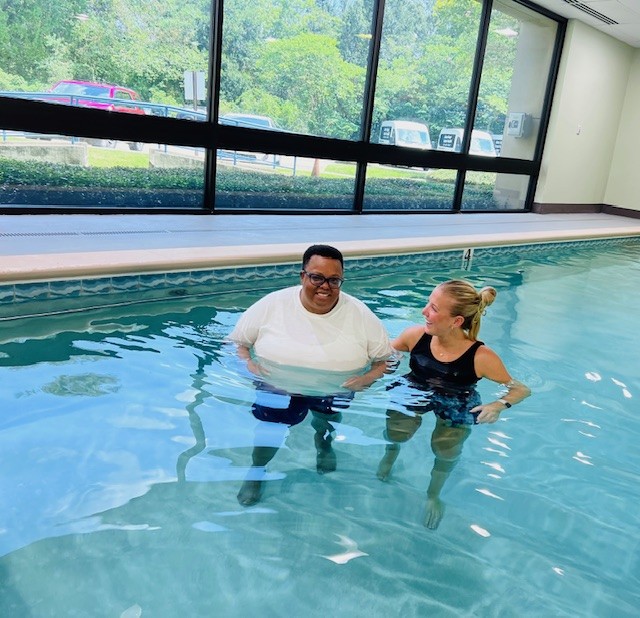

Aquatic therapy combines exercises in the aquatic environment with physical or occupational therapy, which provides heat, buoyancy, resistance, and hydrostatic pressure.
Heat - Pool temperatures range from 92 to 96 degrees, which allows for relaxation of the muscles, decreased pain, and increased range of motion.
Buoyancy - This provides support and decreased bodyweight, which challenges balance and allows a patient to move more easily with less pain through joints.
Resistance - This allows a patient to increase muscle strength in all directions as well as improve sensory awareness.
Hydrostatic Pressure - The pressure from the surrounding water helps circulate the blood from the legs to the heart, often reducing swelling and joint tenderness while increasing range of motion.
Common Disorders:
Benefits: Aquatic therapy helps to improve muscle strength, range of motion, improve balance and coordination while decreasing pain and stress. It can also improve posture, body mechanics, and lung capacity.
Contraindications:
Pool maintenance is M W F 1:30-2:30.
A physician order for physical therapy/aquatic therapy evaluation is required. For more information, call (225) 231-3107 or your physician can fax an order to (225) 442-5233.
We care about protecting your data. Read our Privacy Policy.
